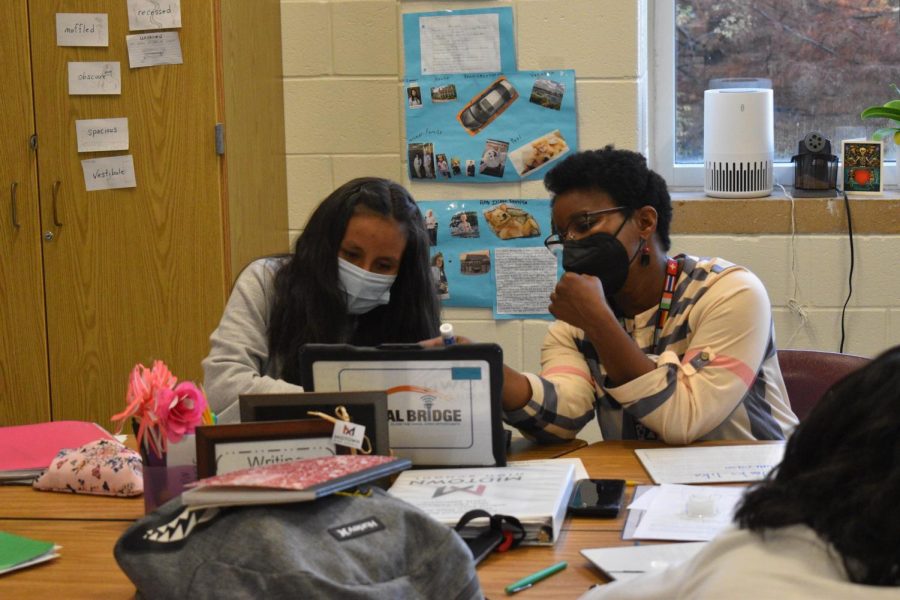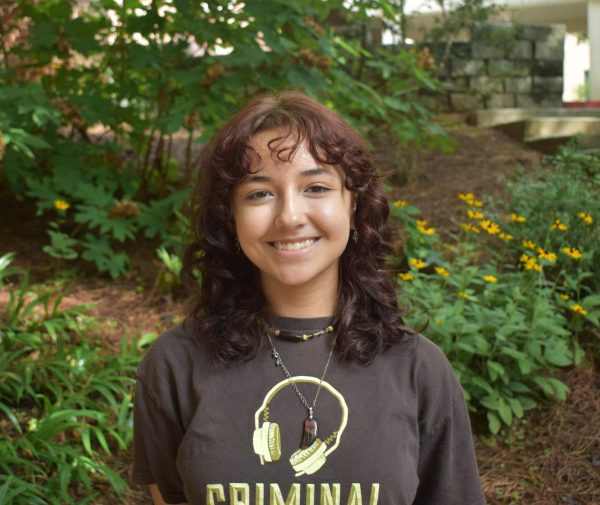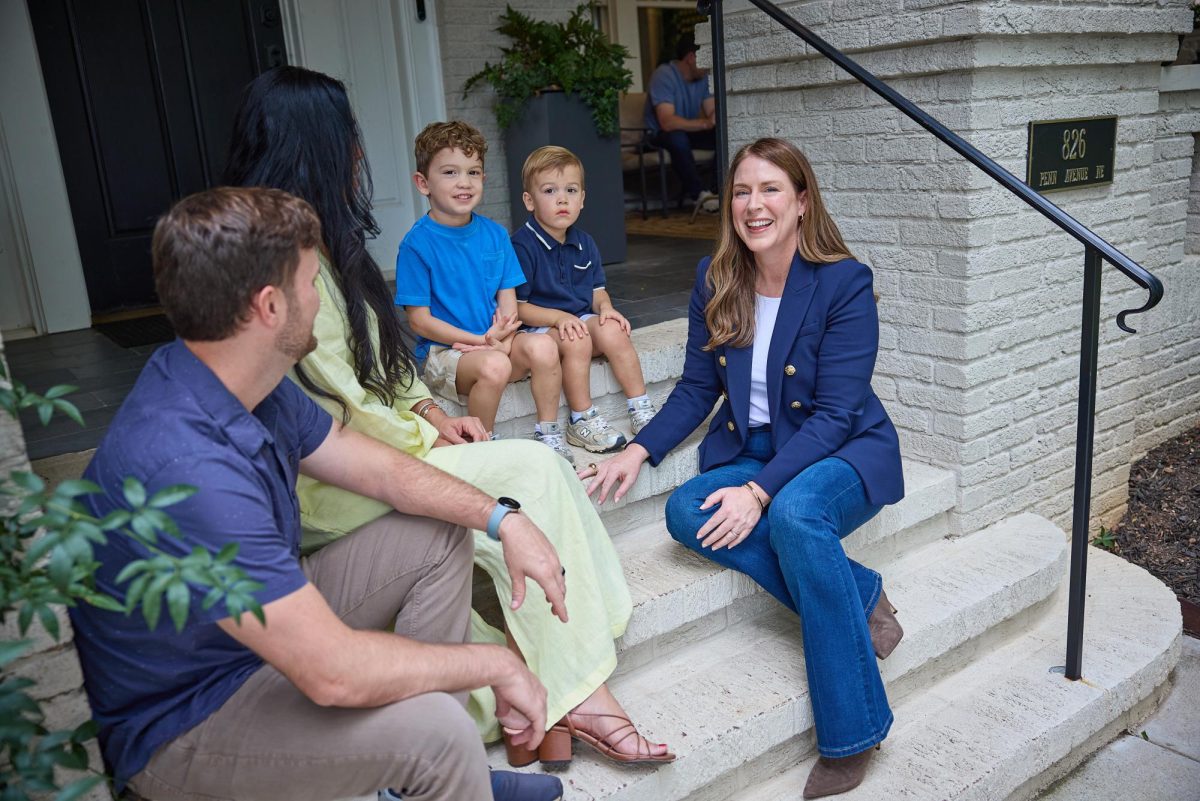ESOL program alleviates community, academic challenges
To assist with the learning and comprehension of all of her students, ESOL teacher Che Andrews checks in on each individual student and helps them overcome any difficulties when learning and improving their English.
January 5, 2022
Navigating the social and academic aspects of high school can be difficult for students. Trying to do this with little knowledge of the local language creates an additional set of challenges. For some students involved in the English to Speakers of Second Language (ESOL) program, these challenges are a daily occurance.
“When you first enter [the ESOL program] it is hard,” said freshman Amy Isidor-Renteria, who has been in the ESOL program since second grade. “It’s hard for you to learn English, but it’s also fun. You meet new people.”
The language barrier is one of the main challenges ESOL students have to overcome. To assist students in adjusting to the academic and social obstacles of the language barrier, ESOL teacher Che Andrews uses various strategies.
“I just try to put myself in their place,” Andrews said. “If I was looking at another language, I would need some support. I would need a person to speak slower; I would need to see visuals. I would focus on keywords [and] what I really need to know. I would just need someone to be patient with me and maybe have a friendly person to help me.”
Andrews teaches international students from all over the world who speak varying languages. However, regardless of a student’s first language, Andrews can teach students English by using these methods and by gently pushing them.
“Some of my students have told me they are glad that I only speak English with them because it forces them to learn the language instead of depending on their first language,” Andrews said.
While English is heavily encouraged, students are also able to speak in their first language. This has been helpful when language barriers are apparent in class. The small class size also creates a community of ESOL students that support each other.
“I like the people that I meet,” Isidor-Renteria said. “I can help new people that are in the program.”
High-proficiency students like Isidor-Renteria help Andrews communicate with students that are not as fluent. Andrews also utilizes tools like Google Translate and dictionaries to assist with translation. However, when ESOL students are in their general classes, these resources are not always available.
Less proficient students may feel excluded in class, due to the language barrier.
“I don’t think they participate as much as I would like them,” Andrews said. “That’s the reason I wanted to start the International Club — a place for them to be and feel included.”
The International Club is student-run and celebrates different cultures present at Midtown. For Hispanic Heritage Month in October, the club organized a celebration to educate other students about South-American geography, maps, culture and even dancing.
“It’s a place to express ourselves and our interest in culture,” sophomore Vadym Nahornyi said. “Usually, we plan small events or sometimes, big events, like the recent Flamenco dancing. We were able to have stands with Spanish-speaking countries and teach a lot of people a little bit about Spanish-speaking countries and their culture.”
The club provides ESOL students the opportunity to connect, socialize and practice speaking and listening with other students. For students fluent in English, the club provides opportunities to explore multiple cultures.
“Everyone is welcome,” Andrews said. “I want everyone to feel included, and I want my kids to meet other students and feel welcome. Maybe, they just might want to go to a game, and they might want to participate in sports or band or music by getting to know other people. I just want them to get the full experience of what Midtown has to offer, which is a lot.”







